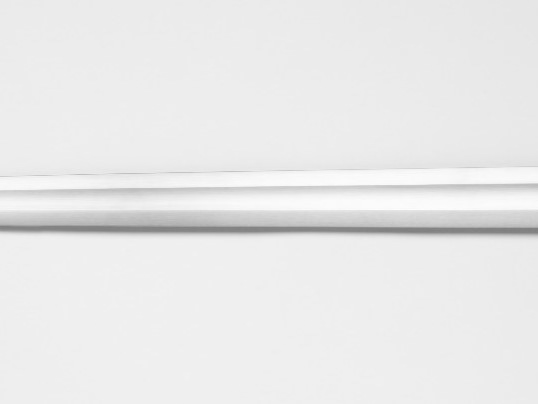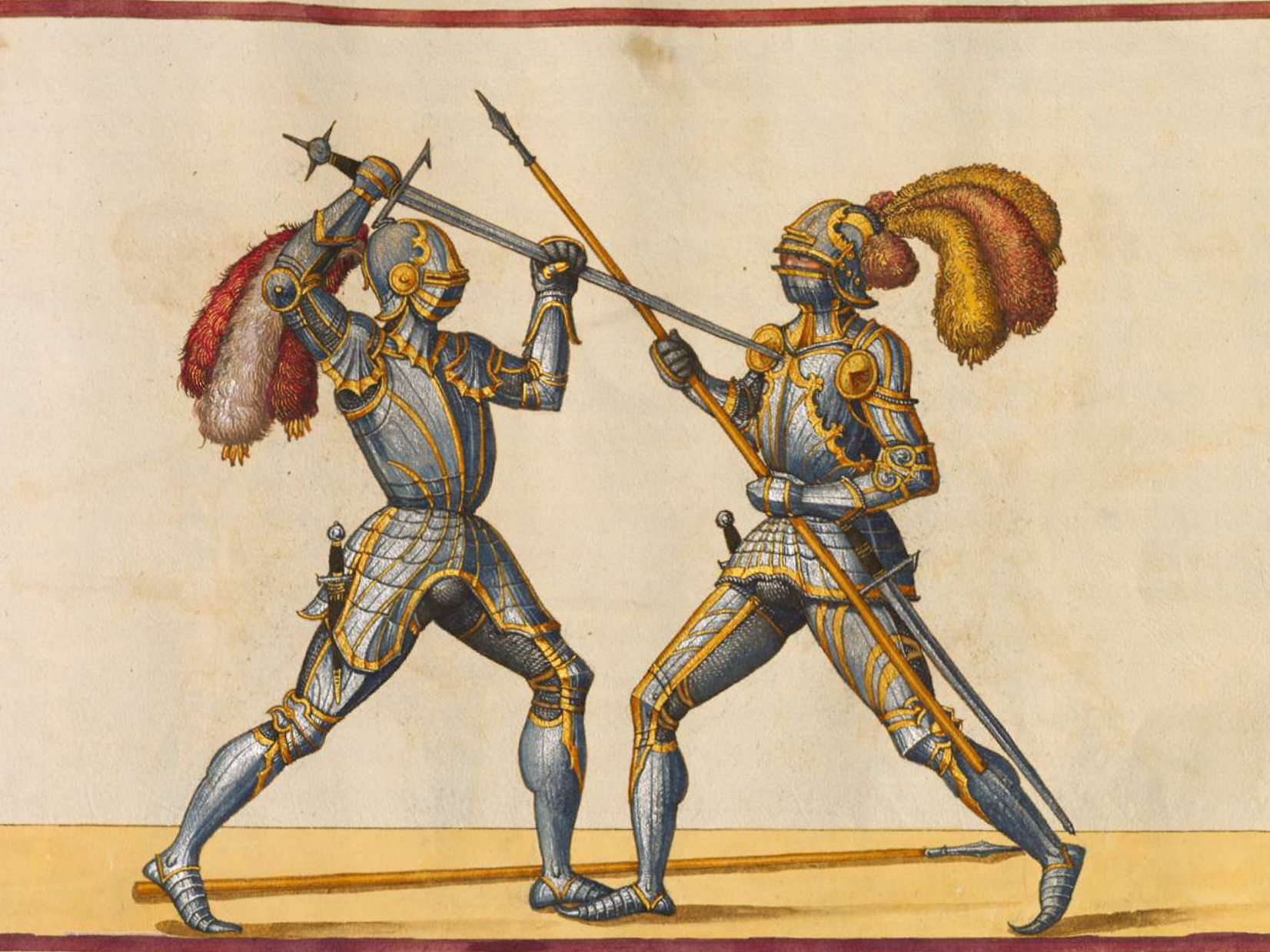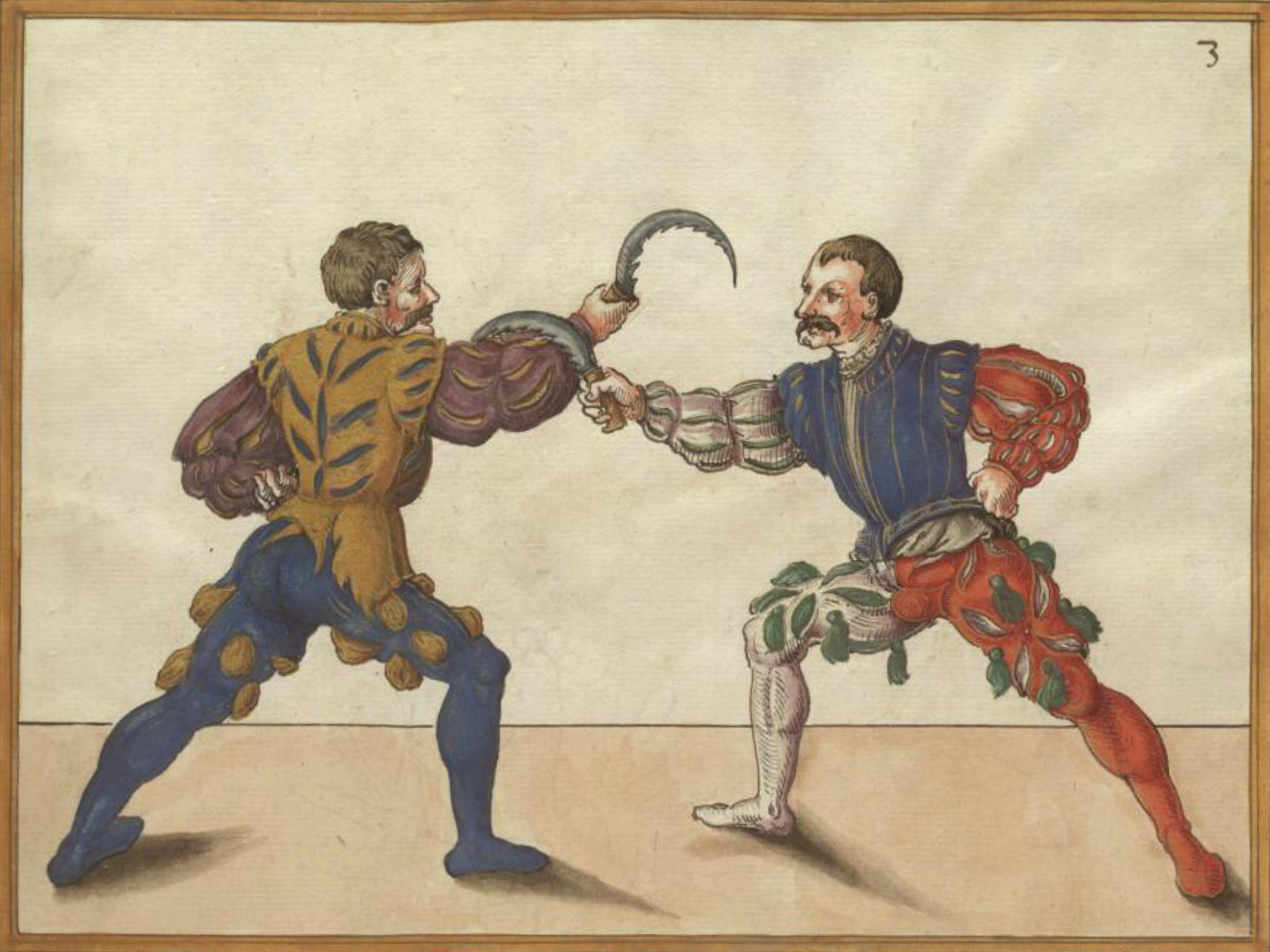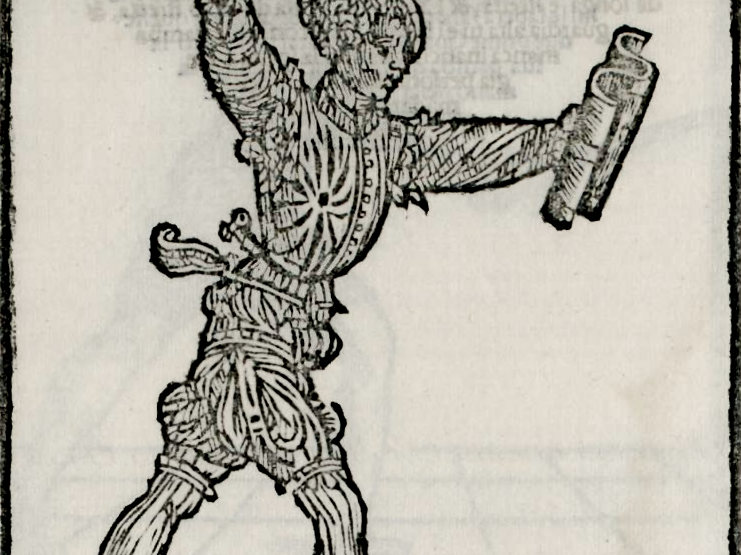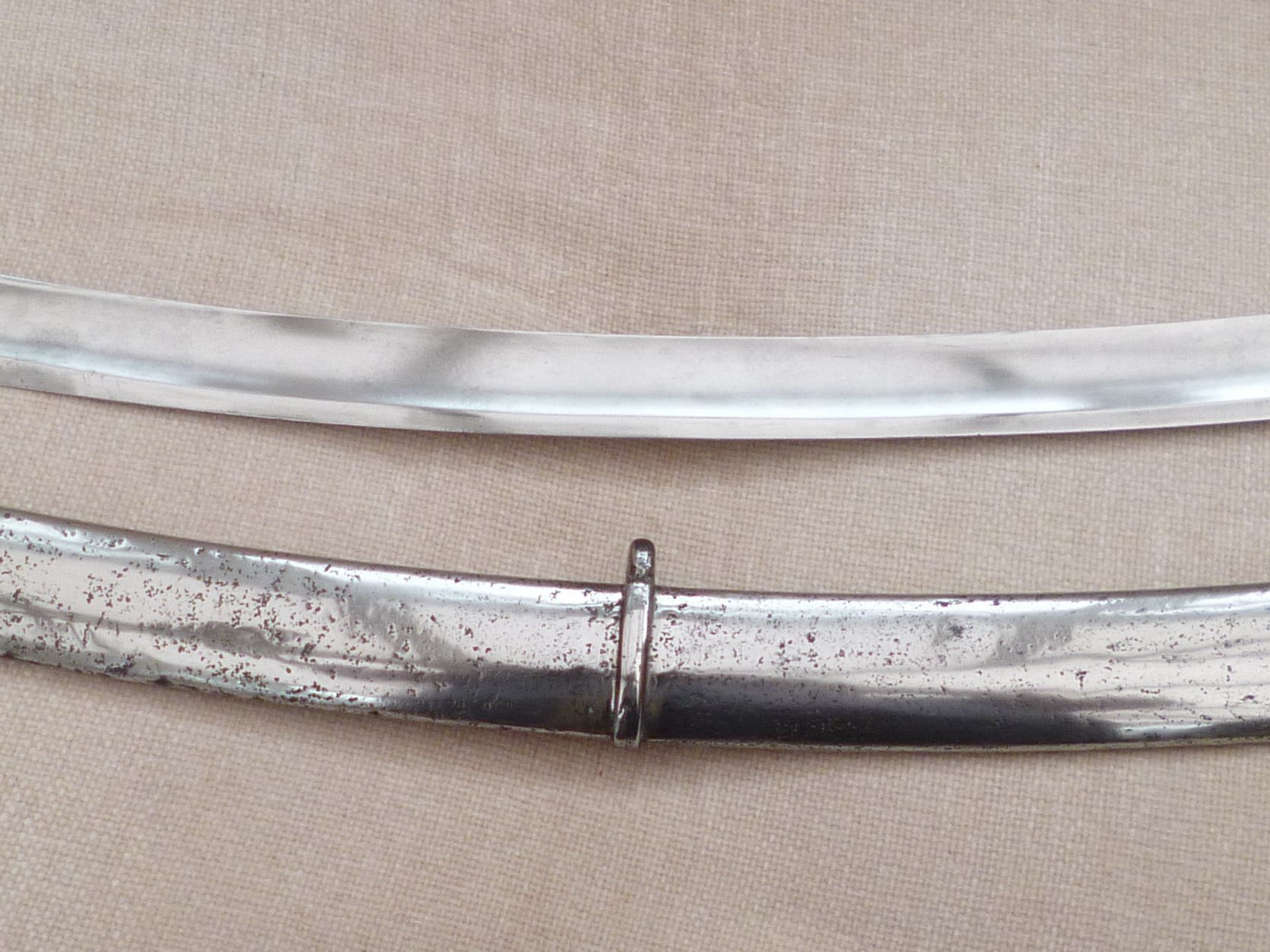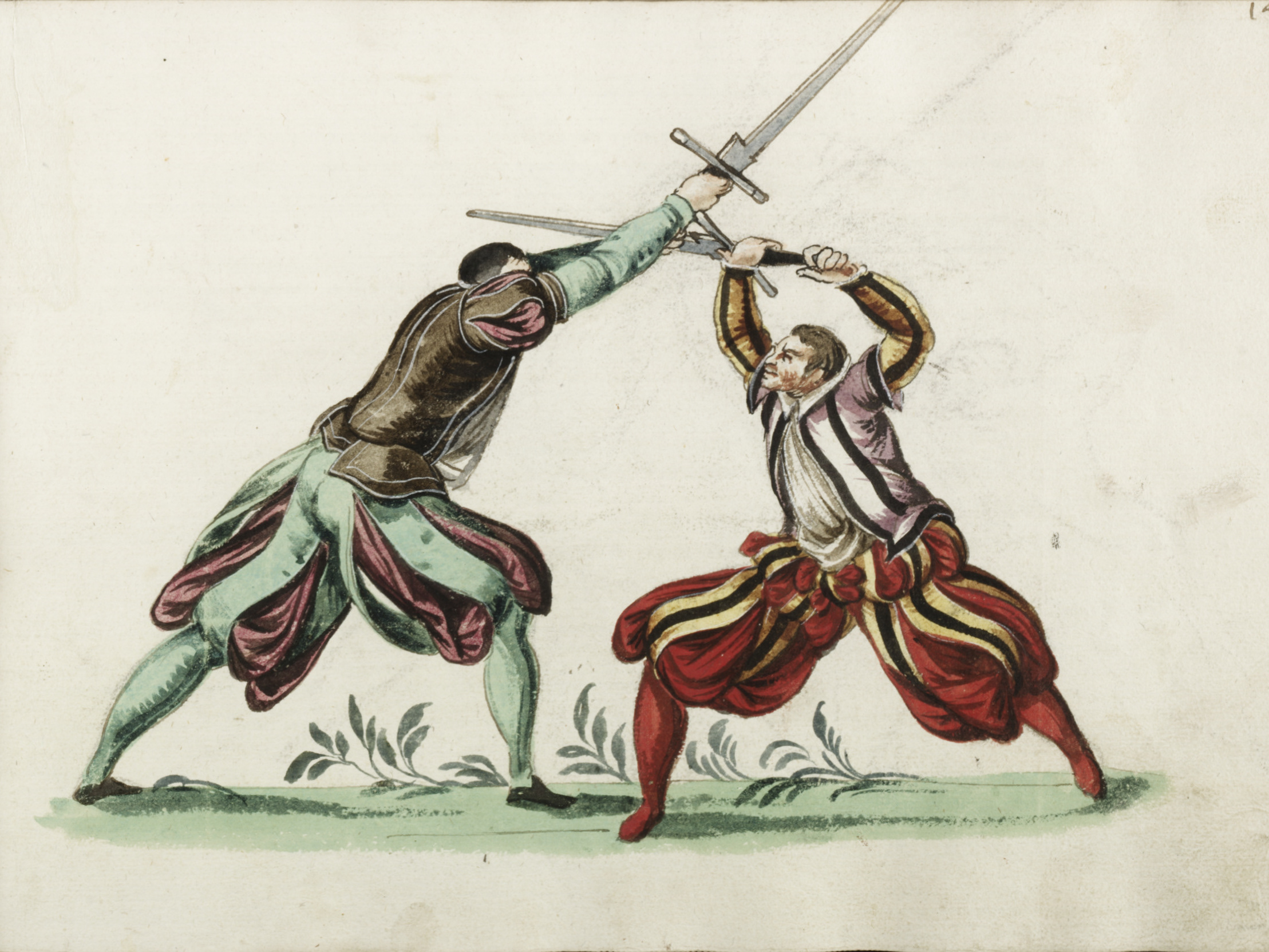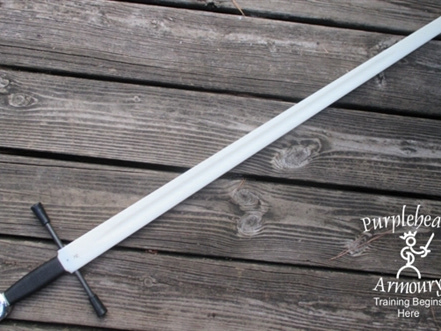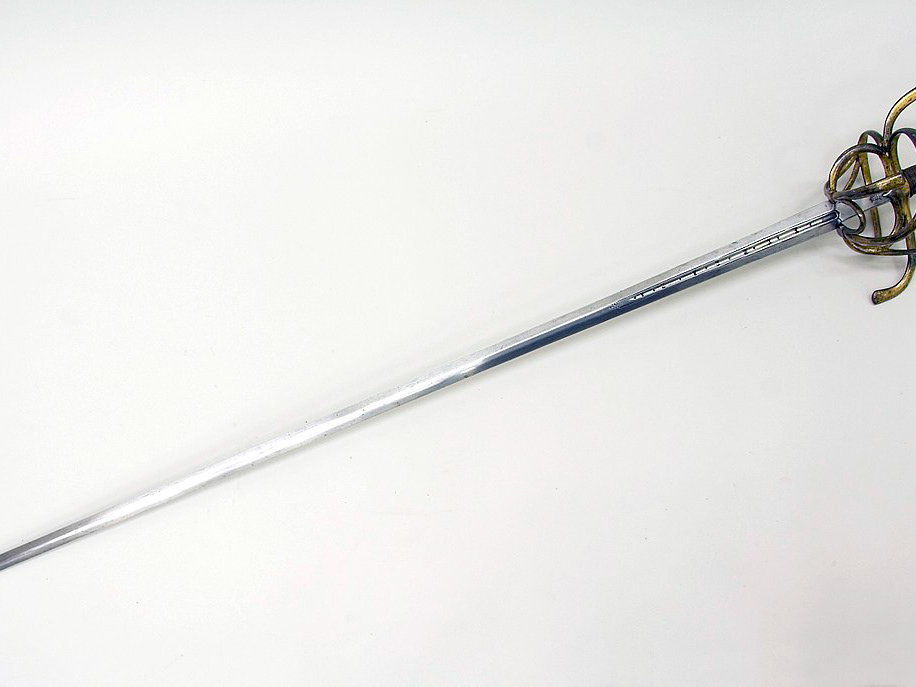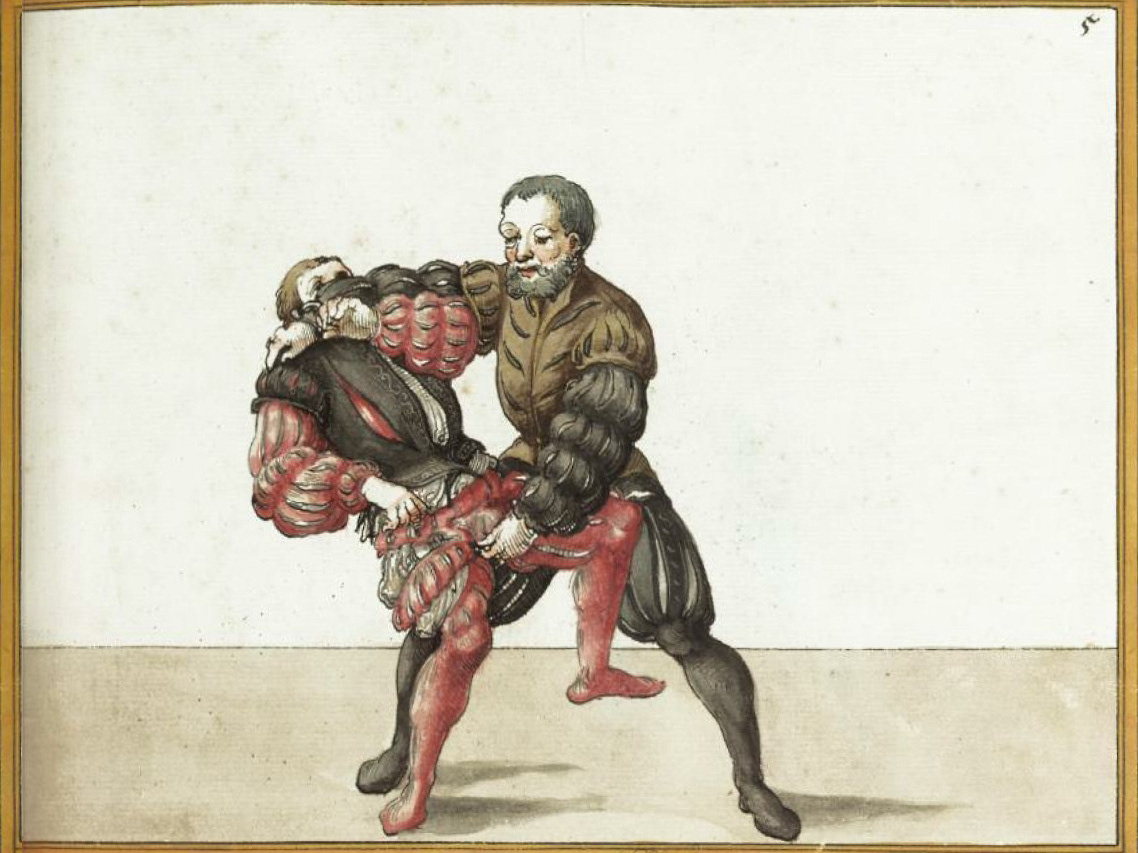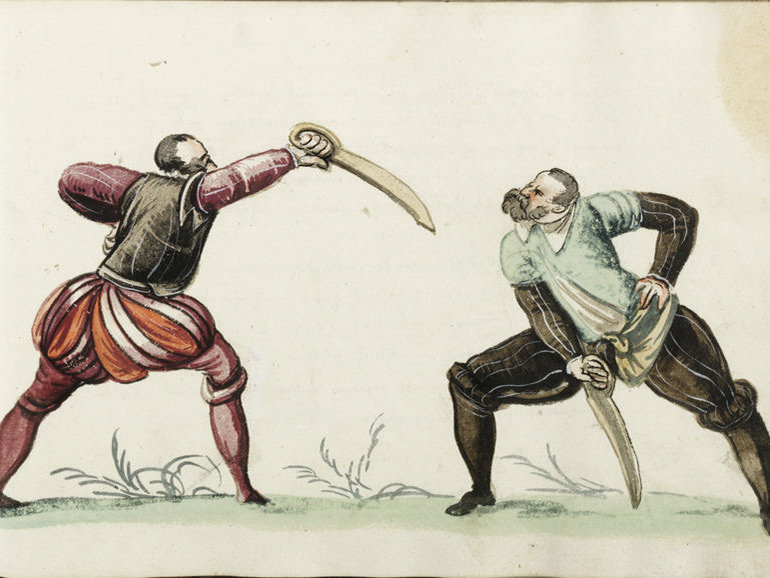Introduction
Mounted fighting (German: Roßfechten), especially in armor, was exceptionally important for any army since a well-trained and effective cavalry could be the deciding factor in a battle. Mounted combat was also present off the battlefield, for duels, jousting, and sport. Combat was also not limited to rider vs. infantry as several sources include techniques for fighting other riders, either with weapons, using the horse itself as a weapon, or even wrestling with other riders on horseback. Weapons used to fight from horseback included lances, swords, spears, maces, and hammers, among others.[1]
A depiction of how to fight with swords on horseback.
Courtesy of Wiktenauer. Public Domain.
Sources
German
Johannes Liechtenauer (1400s): Liechtenauer is considered to be the grandmaster of the entire German school of fencing. While his longsword teachings are the most famous and form the foundation of German longsword fencing for the next 100 years, he also has a section on mounted fencing. While there are few accompanying glosses or explanations provided by other masters of the cryptic instructions contained in Liechtenauer’s treatise, it still serves as one of the earliest sources discussing mounted combat.
Hans Talhoffer Württemberg Manuscript (1459): Talhoffer lived a long and interesting life, as evidenced by his manuscripts which cover armored and unarmored combat with a wide assortment of weapons, including the buckler, crossbow, dagger, flail, Messer, longshield, mace, poleaxe, spear, and sword, as well as unarmed grappling. Talhoffer’s writings cover fighting on horse and on foot and in scenarios including tournaments, formal duels, and unequal encounters implying urban self-defense. His mounted fencing section is sparsely captioned but clearly illustrated and discusses how to fight with a sword, lance, crossbow, and even how to throw an opponent from the saddle.
Martin Huntsfeld (1452-1480): Very little is known about Hunsfeld other than that he must have been a sufficiently accomplished master to be included on Paulus Kal’s list of masters in the Fellowship of Liechtenauer. His mounted combat section features few images but offers descriptions of how to fight with and defend against a lance, as well as how to manipulate an opponent’s horse.
Paulus Kal (1470): Kal was an initiate of the tradition of Johannes Liechtenauer and took great pains to create an honor roll of German Fencing Masters, which he named the Fellowship of Liechtenauer. This list has proved invaluable to researchers by providing an independent confirmation of those masters’ connection to the grandmaster. Kal’s mounted fencing section is sparsely captioned but beautifully illustrated and provides a rich display of how to fight on horseback.
Peter Falkner (1495): Falkner was an experienced Captain of the Marxbrüder fencing guild, the most important organization of German fencers in the 16th century. Falkner's artwork resembles to some extent the earlier treatises of Paulus Kal, which may have been his inspiration, and his art may have in turn influenced Jörg Wilhalm Hutter. His mounted fencing section gives detailed descriptions of various positions in which to hold the lance and the advantages and disadvantages of each position. He also covers how to fight with the sword from horseback and how to grapple opponents while in the saddle.
Paulus Hector Mair (1540): Mair was a collector of fencing manuscripts and owned over a dozen fencing manuals over the course of his life. Most of the treatises Mair published were revisions or expansions upon the works in his collection. His mounted combat section is beautifully illustrated and extensively detailed, discussing how to fight a mounted opponent on foot with pikes, polearms, and rapiers, as well as how to fight on horseback with a lance, sword, and dagger. It also includes an extensive mounted grappling section.
Italian
Fiore de'i Liberi (early 1400s): The foundation of the Italian fencing tradition is the Flower of Battle by Fiore de’i Liberi. The book describes Fiore’s life fighting and teaching and describes how to wrestle and fight with a dagger, sword, polearms, on a horse, and in armor. This is a complete martial system and is foundational to Italian martial arts. His mounted fencing section is extensive and practical, covering how to fight unarmed and with a lance or sword. He even covers tactics like attaching a rope to his lance to throw his opponent from their saddle.
Demonstration
This video is a breakdown of the use of the horse in mounted combat.
This is a demonstration of how a lance or spear is used from horseback.
Lance or spear? How to use a lance or spear from horseback. What's the difference? (We try it out).
Written by Nicholas Allen, founder and former head instructor of the VCU HEMA club.
Edited by Kiana Shurkin, xKDF
Historical sources fact-checked by Michael Chidester, Editor-in-Chief of Wiktenauer
Works Cited
Footnotes
[1] R. Ewart Oakeshott, The Archaeology Of Weapons (repr., Woodbridge, Suffolk, UK: Boydell Press, 1994).
Citations
Oakeshott, R. Ewart. The Archaeology Of Weapons. Reprint, Woodbridge, Suffolk, UK: Boydell Press, 1994.
